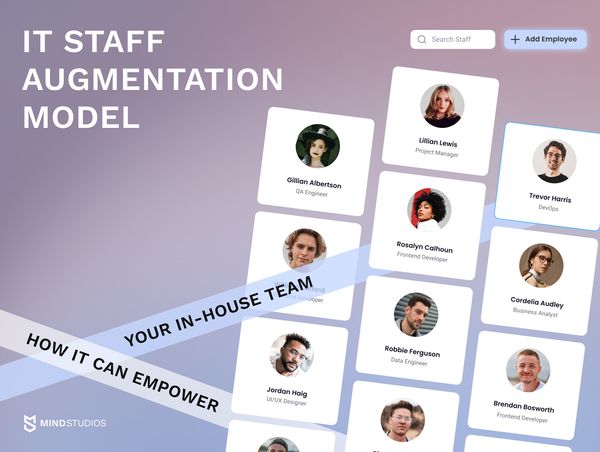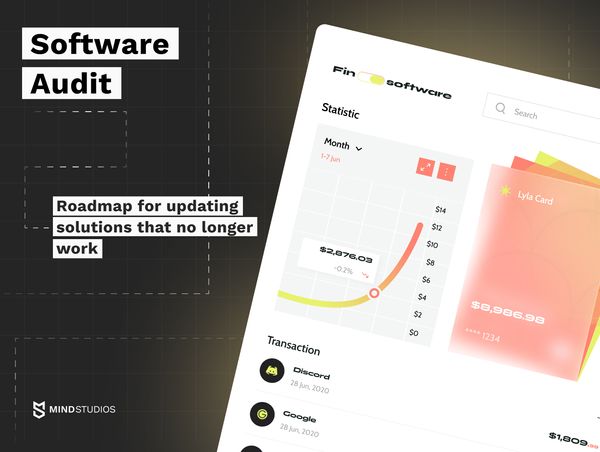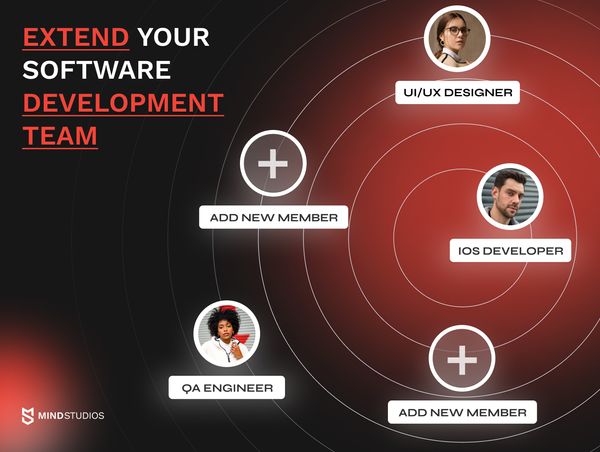
There are plenty of situations that might require an extended software development team. Tight deadlines, projects that exceed the team’s size, skill gaps, and limited staffing budget can lead to cases when hiring external employees will be the most efficient and cost-savvy solution.
Statistics also support this: According to Deloitte’s global outsourcing survey of 2022, 57% of organizations name the overall need to cut costs the primary driver behind using the outsourcing model, while 49% also believe this model grants them access to new capabilities.
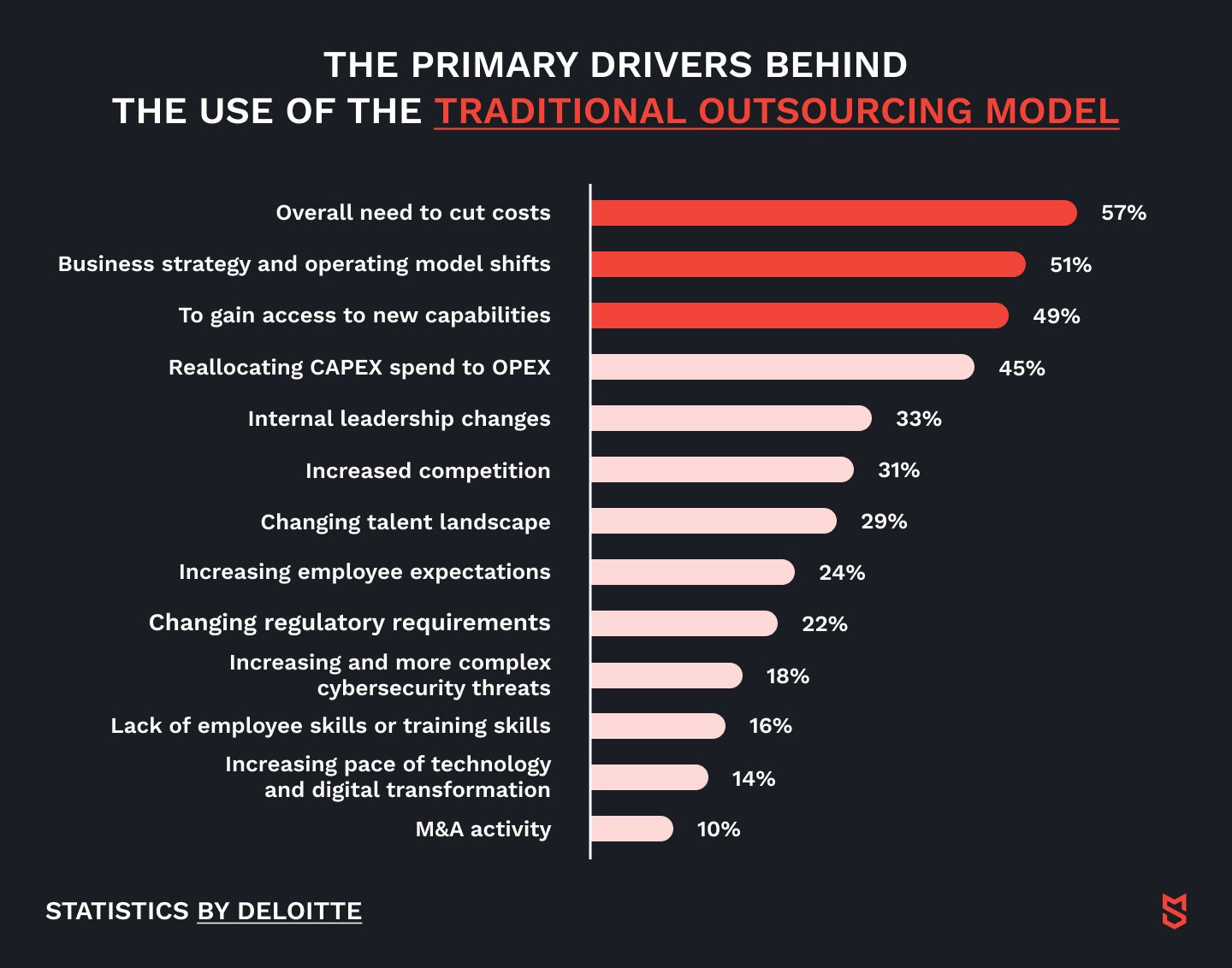
However, the benefits of software development team extension don’t end with that. Outstaffing and outsourcing also help you quickly find experts that can add new tech skills, experience, and ideas to the existing team.
For instance, Mind Studios’ previous expertise in yoga and mindfulness app development helped us support one of the market’s leaders — Asana Rebel. We joined the app’s team to add new features to its Android version, such as Challenges, Weekly goals, Nutrition, and others.

So if you want to figure out if a team's extension is the right option for your company and your case, we’ll gladly share our experience and knowledge with you. Read further to learn all about the basics and benefits of software development team scaling! You can also check out our article on which is better staff augmentation or IT outsourcing.
5 reasons to extend your development team
In November 2022, Meta reduced the size of its team by 13%, laying off more than 11,000 employees. One of the reasons behind this decision is the effect of the COVID-19.
Long and frequent lockdowns caused by the pandemic led to a significant increase in time spent on social networks: 65 minutes daily in 2020 compared to 56 the year before. Meta, along with many other companies, thought that this acceleration would be permanent and started hiring more people. In 2022 Meta had grown to 87,000 employees globally, just to reduce this number drastically only a couple of months later. Turns out the predictions didn’t pay off and the company didn’t need that much staff on a permanent basis.
This is one of the examples of why one has to be careful with scaling and do it only when truly necessary. So when exactly do you need to extend dedicated development team? Let’s focus on the most common (and therefore safest) cases.
1. Your current team doesn’t have the capacity to cover all your projects
Sometimes a project that seems small at first sight can turn out to be much bigger than expected. For instance, this can happen if you decide to implement additional features in the process. Several projects can also suddenly overlap, getting your team swamped with work. In any of these cases, software development team scaling can help you and your employees meet deadlines and successfully release all projects.
Such things also happen because of imperfect planning. In Gitlab’s 2022 Global Development Survey, 31% of software developers named such planning as one of the most likely reasons causing project delays.
And even if the planning is good, small companies might face other challenges, such as the need to distribute efforts between development and marketing equally. Entrusting the development to an extended team can help the company focus on marketing.
This happened with Fitr. Training — a fitness platform for remote coaching. Our client had a brilliant idea and was focused on finding the right investors for it. It wouldn’t be possible to put equal effort into app development without compromising the quality of the product.
We at Mind Studios took the development into our hands. As a result, the app has been delivered on time and now is widely appreciated by big names in the fitness industry. One of them is Mat Fraser, 5X Fittest Man on Earth, who used Fitr. Training as a software of choice to power his HWPO Training platform.

2. You have to fill a technology or skill gap within the existing team
Tech and skill gaps are a big issue for most companies worldwide. According to 2021 research by McKinsey & Company, 87% of companies from all over the world claimed they either have a skill gap or are expected to experience it in the next few years.

The rapid development of AI-based technologies makes it even more complex for companies, big and small. AI adoption in 2022 was 2.5x higher than in 2017, increasing the demand for AI specialists and adding new skills that have to be covered.
But even if your company doesn’t work with AI products, chances are you might face a certain tech or skill gap on a project. Filling this gap by hiring an in-house worker would be a cost-efficient decision only if you need such skills all the time. In other cases, it might be cheaper and more rational to fill the gap by scaling software development teams, especially for growing companies.
For instance, one of our clients came to us when he noticed a decrease in traffic on his project — a website with an mp3 pool for professional DJs. His team didn’t have the skills to tackle the problem, so he delegated the investigation to us.
Detailed research helped us understand the main reasons for the traffic decrease and solve them by delivering a new, more modern version of the website.
3. You’re looking for ways to optimize costs
In-house hiring requires time and money. According to Indeed, companies sometimes pay between $4,000 and $20,000 just to hire a new employee, not including salary and benefits. They also have to plan the workload precisely, to avoid massive layoffs or prolonged benches.
Alternatively, you can use outstaffing or outsourcing for software development team extension. Doing that allows you to hire employees only to complete a specific project, scale the existing team when necessary, and save time on recruiting and training.
The cost and quality ratio is also one of the main reasons international clients turn to Mind Studios for help. Our expertise, skill set, and delivery speed combined with relatively low rates (especially compared to the ones in the US) make us a promising and reliable partner for many leaders of the market in various niches, such as the Asana Rebel app that we helped to upgrade.
4. You need to scale or modernize your product
To remain competitive and progressive in the modern tech world, companies have to keep up with innovations. This can include adding new features to the existing products and modernizing them to keep up to date.
Latest software development trends and forecasts support that, constantly pushing companies and developers to achieve new heights. For instance, according to IDC’s predictions, over 90% of apps will become cloud-native by 2025. It’s important to keep such things in mind while outlining your development strategies for the future.
Software development team scaling is one of the quickest ways to grow or modernize an existing product. Hiring employees familiar with a certain technology can drastically reduce your time to market.
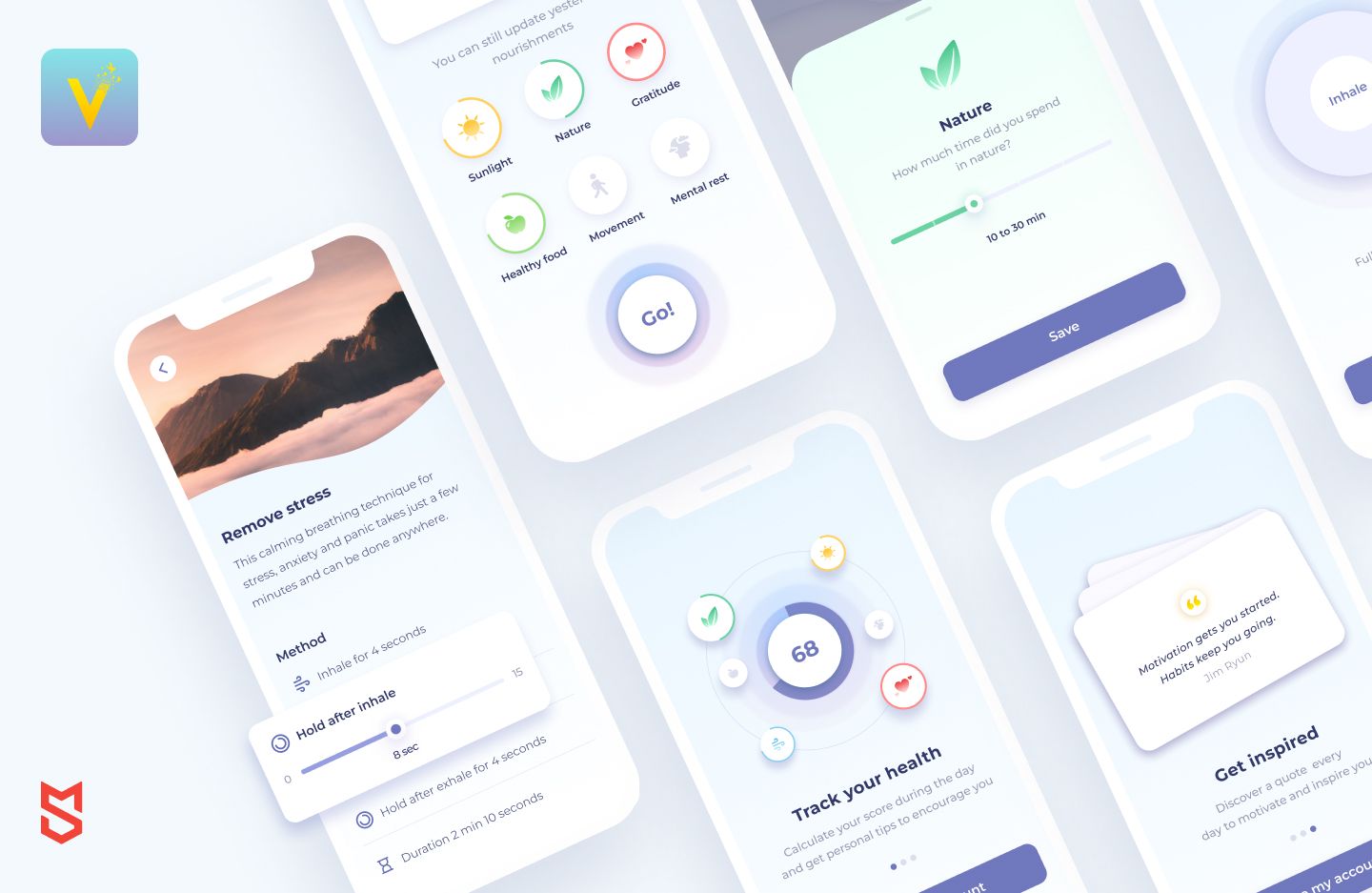
That’s what Mind Studios did for the Envol app. Our clients already had an Android version of the app and wanted to create one for iOS devices while also improving the existing app’s look and feel.
They didn’t have an in-house team for iOS development. Therefore, entrusting the process to Mind Studios was the quickest and easiest way to obtain that desired upgrade along with the long-term support that we keep on delivering. This surprisingly resulted not only in the desired iOS version but also in the rebuild of the Android one. At the discovery stage we realized it was easier to create a new Android app from scratch than rework an existing one and suggested that to the client, who agreed.
5. You want to hire from a global pool of talents
When you work only with employees from your country, the talent acquisition process can take a while. The best of the best are usually in high demand and their budgets might not be the most affordable, especially for small companies and startups.
Looking for new employees worldwide, on the other hand, helps not only grow a software development team but also to obtain new tech insights and save costs. The rates can be a massive advantage. The hourly wage of software developers in the US typically reaches $80–$135 for employees of small NYC companies and could go up to $150 on average in Califiornia. In Ukraine, however, developers can charge from $40 to $55 per hour.
This is also a quick way to find talents that are well familiar with a specific technology or can master it quickly.
Mind Studios did this while working on a secure messaging app for the Middle East region. Initially, we planned to use the Ruby on Rails framework to build the app but later understood that it would be better to switch to Elixir. Although this programming language is considered a non-standard one, our team was able to master it quickly and deliver a great result.
5 ways to extend your software development team
There are five most common ways to extend a software development team:
1. In-house hiring
This is the most traditional approach to hiring. You recruit software developers to work for your company (and only your company) permanently. They receive a stable salary, work equipment, and the benefits your company provides (medical insurance, gym membership, and other things).
Extending your team with in-house employees is a good option when your company experiences stable growth and you want to have all control over the development processes. But it might not be the best solution for quick team scaling, short-term collaboration, and unstable workload.
2. Hiring freelance developers
Freelance specialists join your team usually to work on specific, often one-time tasks. They get paid either for time spent on your project (hourly, weekly, or monthly rates) or per project itself.
Hiring such professionals can be a good solution if you require specific assistance from one or two experts. This is a cost-savvy solution that, however, has its challenges. The main of them are higher risks of data leaks and more complicated management, especially if these experts work in different time zones.
3. Outstaffing agencies
Outstaffing is the way of scaling your software development team with several specialists from a third-party agency or company. Such professionals perform tasks that you assign to them but technically remain employees of another company.
This approach allows you to instantly obtain workers with desired skill sets quickly, cooperate with them as long as you need to, and quickly terminate your collaboration. However, you have to ensure that such employees have no trouble working together with your existing team. For instance, language barriers can become a hindrance.
4. Dedicated team
A dedicated team is similar to outstaffing. The only difference is that you collaborate with not a few workers but with the whole team responsible for certain parts of a project, be it software development or QA engineering.
Such a team also remains employees of a third-party provider, having the same pros and cons as the outstaffing model.
5. Outsourcing
Outsourcing is the process of entrusting all the work on a project to an external team. All development, testing, management, and other stages of the process are done by the outsourcing company. You, in turn, can focus on other tasks (for example, promotion).
As this model grants you very limited control over the development process, it’s extremely crucial to pick a skilled and trustworthy company for collaboration. Otherwise, you might save time and money but don’t receive the result you expected.
To learn more about these 5 models, and their pros and cons, read our article about roles in a mobile app development team.
Best Practices for Extending Your Software Development Team
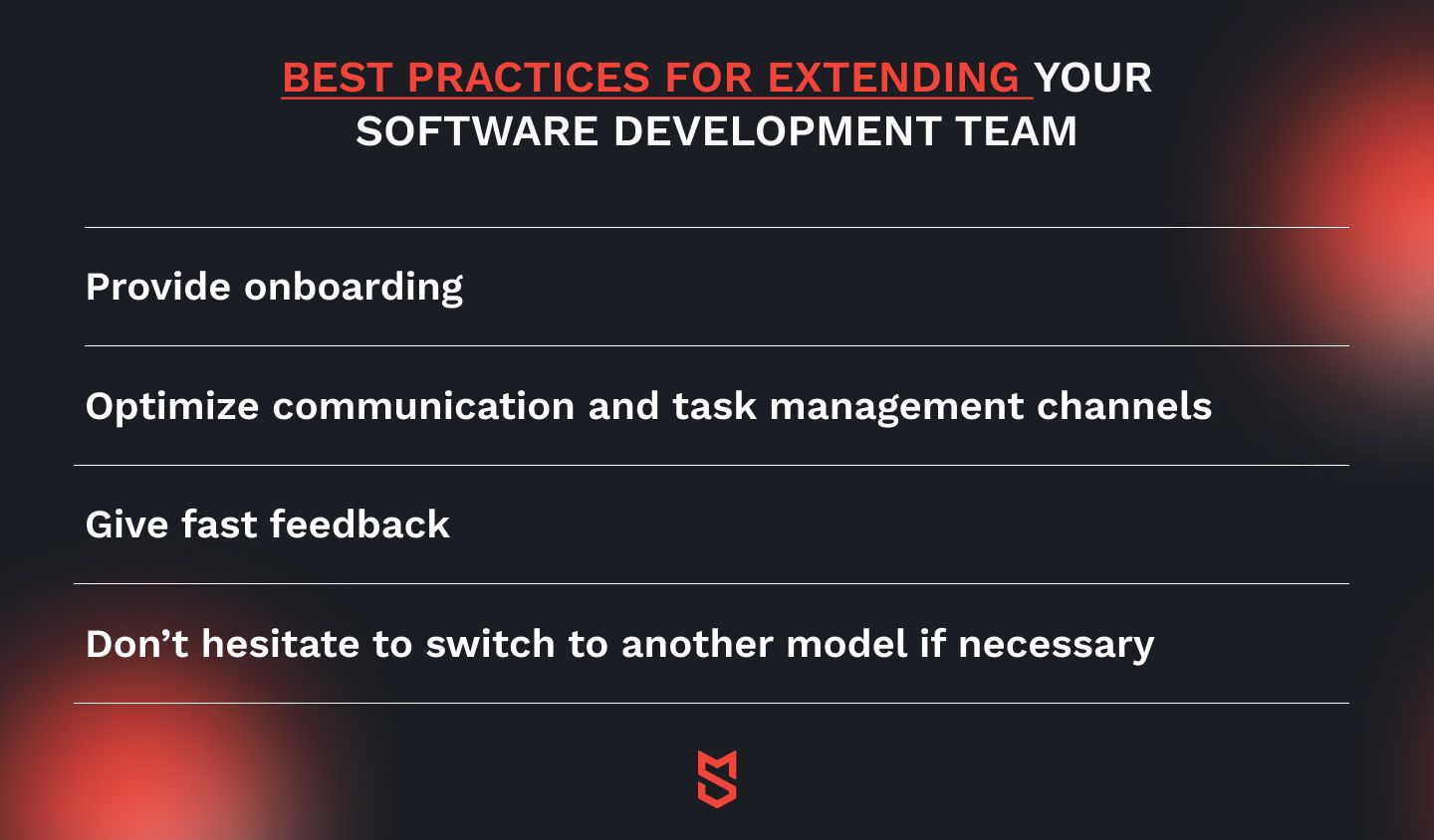
Software development team extension has its challenges as well. To handle them efficiently, we suggest following some of these best practices.
Provide onboarding
Most companies have onboarding and team building processes for new in-house employees. However, it’s just as important to onboard developers that will be joining your team even on a short-time basis. This will help them understand your company’s values and goals, and merge with the rest of the team more easily.
You can also prepare some guides and other comprehensive documentation that can help new employees figure out the processes more quickly. This will be useful to all of your future workers.
Optimize communication and task management channels
Having too many channels for communication, task discussion, and management can be not only confusing but also distracting to new employees. As a result, this could slow the onboarding processes and affect the project’s delivery dates.
Ensure that all of your team members, especially new ones, have quick and easy access to all critical information and discuss the work processes in a channel that everyone involved has access to.
Give fast feedback
Feedback exchange ensures that you and your extended software development team are on the same page regarding the project’s goals, details, and delivery dates. When you’re working with an international team from different time zones, it becomes even more critical.
Your new employees might be accustomed to different working policies and routines. Fast feedback can help them adjust to your company’s work pace and expectations. You, in turn, will rest assured that the project will turn out to be just as you expected.
Don’t hesitate to switch to another model if necessary
Here’s what Mind Studios’ CEO Dmytro Dobritskyi says about the most common issues that scaling companies face while picking not the best model for their needs:
“As the team grows and changes, so do its processes and interactions. Certain policies and procedures that weren’t necessary before become mandatory now. Now you have not one team, but several of them that have to be organized, developed, and motivated correctly to achieve the best results. You also have to work on communication and quickly solve the emerging conflicts if they appear”.
All of these activities can overburden top management, making it harder for them to focus on the existing goals. For those who find themselves in that situation while working with an outstaff team, Dmytro recommends switching to the offshore development office model.
This model allows us to outsource most of the challenging processes. The outsourcing company will provide a remote team of desired scale and skill set and help retain, upgrade, and motivate it.
We at Mind Studios can help provide such services too. Turn to us if you want to quickly optimize the team’s performance and entrust its management to our experts.
Mind Studios as your tech partner
If you want to extend your software development team with dedicated professionals, Mind Studios can gladly come to your aid! We offer different collaboration models with diverse scalability, from outsourcing to joining your team as niche experts.
We do our best to awe our clients with the delivery speed without compromising the quality. James Butler's mobile app is a vivid example of that. Our team delivered four apps (two iOS and Android versions, one for buyers and one for shoppers) in only three months with the required quality, achieving client satisfaction.
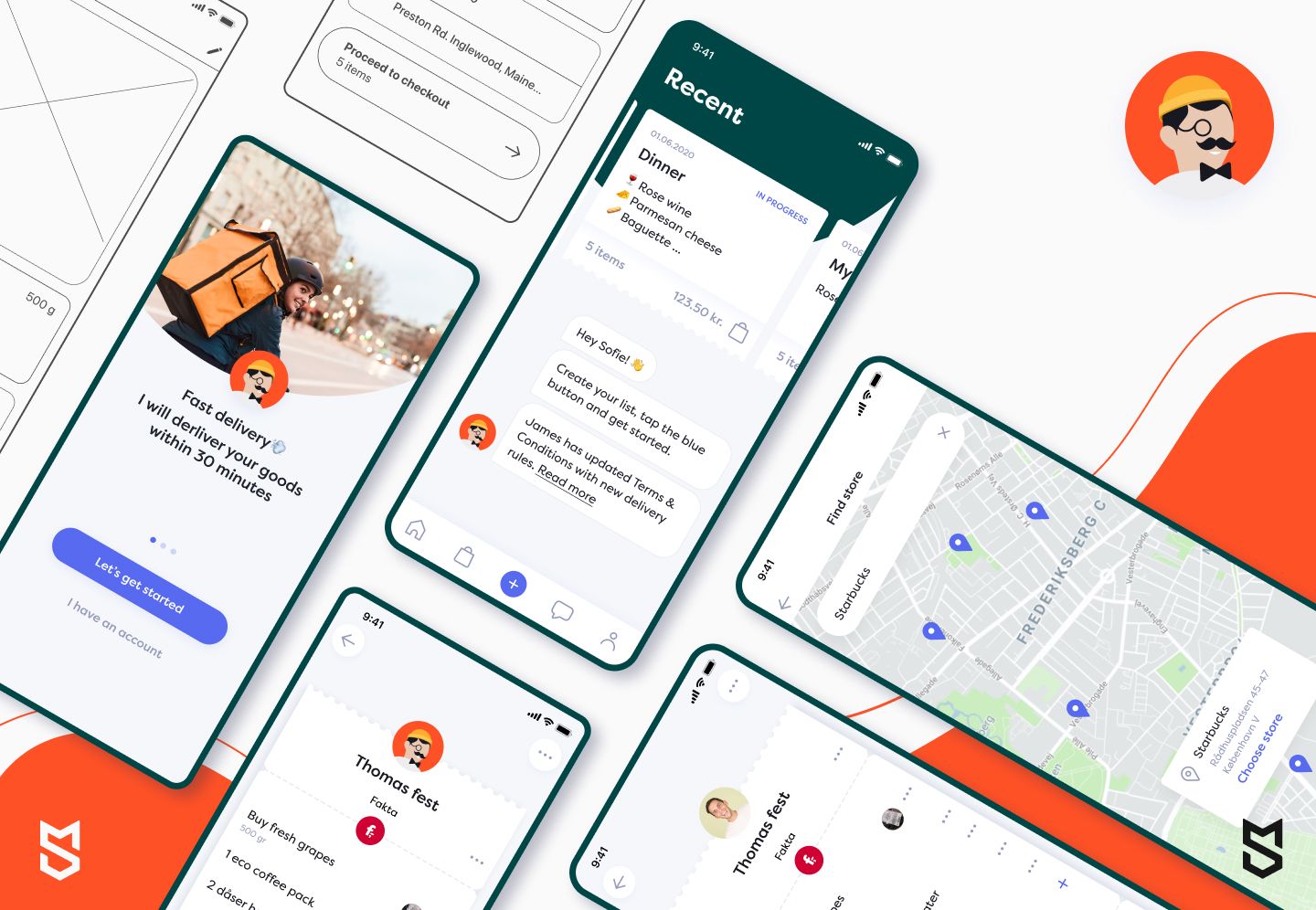
We have a fair share of experience working with different niches, such as health and fitness, delivery, and entertainment, and projects of various scales, including developing apps from scratch or implementing new features into existing products.
Conclusion
Software development team scaling can help companies quickly cover tech and skill gaps, optimize costs, efficiently scale or modernize their products, and meet deadlines.
There are 5 models of staff augmentation: you can hire in-house employees, freelance, work with outstaffing and dedicated teams, or entrust all development to outsourcing companies. Each model has its pros and cons and there’s no one-fits-all solution. In the end, it all depends on your needs and budget.
We at Mind Studios can help you pick the right model to achieve your goals and offer our best experts to tackle your projects. If you’re looking to expand your team with software developers that can quickly learn new technology and impress you with delivery speed — look no further! Contact us for a free consultation.


